Causes of Child and Maternal Mortality in Haiti
Hover over each cause of mortality below to see how select health behaviors contribute to mortality reduction globally, listed in alphabetical order. Note that the behaviors are not linked to mortality at the country level.
Child Causes
Age 1 month to 5 years
Sources: WHO-MCEE Estimates for Child Causes of Death, 2015, Demographic and Health Survey
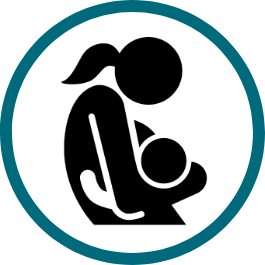 Breastfeeding
Breastfeeding
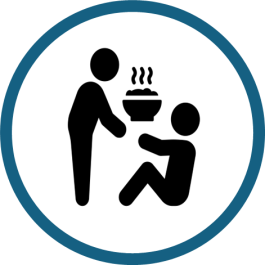 Care for Acute Malnutrition
Care for Acute Malnutrition
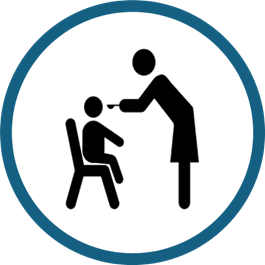 Complementary Feeding
Complementary Feeding
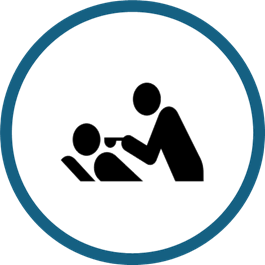 Feeding during and after Illness
Feeding during and after Illness
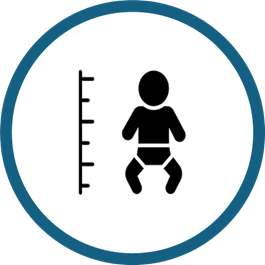 Growth Monitoring
Growth Monitoring
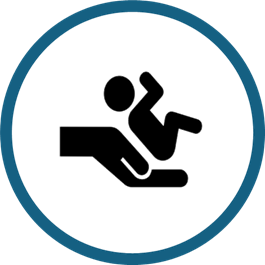 Nutrition Sensitive Health Behaviors
Nutrition Sensitive Health Behaviors
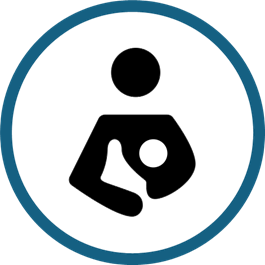 Postnatal Nutrition
Postnatal Nutrition
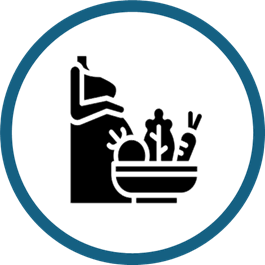 Pregnancy Nutrition
Pregnancy Nutrition
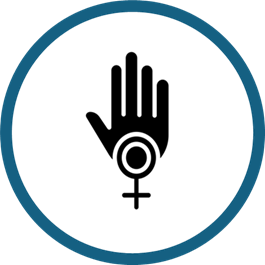 Conflict Areas
Conflict Areas
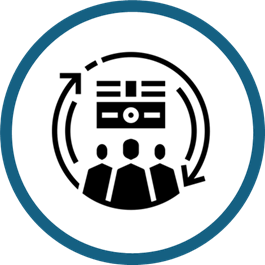 Private Sector Systems Strengthening
Private Sector Systems Strengthening
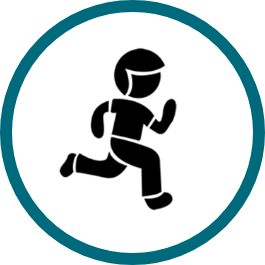 Child Health and Immunization
Child Health and Immunization
Care for Pneumonia
Caregivers appropriately manage care for signs and symptoms of ARI in children
Indicator: Percentage of children born in the five years preceding the survey with acute respiratory infection taken to a health facility
See Subnational & Trend data See Subnational & Trend dataManagement of Diarrhea
Behavior: Caregivers appropriately manage diarrhea in children
Indicator: Percentage of children born in the five years preceding the survey with diarrhea in the two weeks preceding the survey who received oral rehydration solution (ORS), that is either fluid from an ORS packet or a pre-packaged ORS fluid
See Subnational & Trend data See Subnational & Trend dataFull Course of Immunizations
Behavior: Caregivers complete a full course of timely vaccinations for infants and children under 2 years
Indicator: Percentage of children 12-23 months who had received all 8 basic vaccinations
See Subnational & Trend data See Subnational & Trend data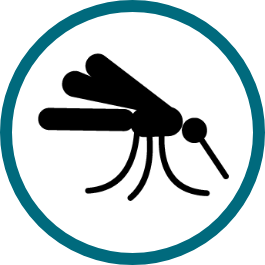 Malaria
Malaria
Insecticide-Treated Net Use
Pregnant women and children sleep under an insecticide-treated net (ITN)
Indicator: Percentage of pregnant women who slept under an insecticide-treated net (ITN) the night before the survey
See Subnational & Trend data See Subnational & Trend dataIndicator: Percentage of children under age five who slept under an insecticide-treated net (ITN) the night before the survey
See Subnational & Trend data See Subnational & Trend dataIntermittent Preventive Treatment of Malaria in Pregnancy
Pregnant women take intermittent preventive treatment of malaria (IPTp) during antenatal care (ANC) visits
Indicator: Percentage of women age 15-49 with a live birth in the two years preceding the survey who during the pregnancy took 3 or more doses of SP/Fansidar, with at least one dose during an antenatal care visit
Indicator: Percentage of women age 15-49 with a live birth in the two years preceding the survey who during the pregnancy took 2 or more doses of SP/Fansidar, with at least one dose during an antenatal care visit
Care for Malaria
Caregivers appropriately manage care for signs and symptoms of malaria for children
Indicator: Among children under age five with fever in the two weeks preceding the survey, percentage for whom advice or treatment was sought from a health facility or provider
See Subnational & Trend data See Subnational & Trend data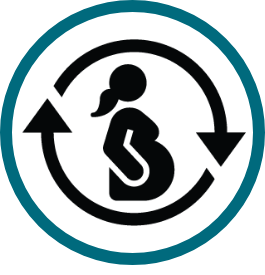 Maternal Health
Maternal Health
Antenatal Care
Pregnant women complete a full course of quality antenatal care (ANC)
Indicator: Percentage of women who had a live birth in the three years preceding the survey who had 4+ antenatal care visits
See Subnational & Trend data See Subnational & Trend dataDelivery in Health Facility
Pregnant women deliver in a health facility with an equipped, qualified provider
Indicator: Percentage of live births in the three years preceding the survey delivered at a health facility
See Subnational & Trend data See Subnational & Trend data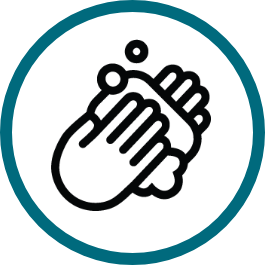 Water, Sanitation and Hygiene
Water, Sanitation and Hygiene
Handwashing with Soap
Family members wash hands with soap under running water at 4 critical times [after defecation, after changing diapers, before food preparation and before eating]
Indicator: Among households where place for handwashing was observed, percentage of households with soap and water. Soap includes soap or detergent in bar, liquid, powder or paste form.
See Subnational & Trend data See Subnational & Trend dataSafe Disposal of Human Feces
Family members safely dispose of human feces
Indicator: Percentage of households with improved and non-shared toilet facilities
See Subnational & Trend data See Subnational & Trend dataSafe Drinking Water
Family members drink safe water
Indicator: Percentage of households whose main source of drinking water is an improved source
See Subnational & Trend data See Subnational & Trend data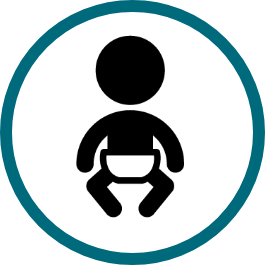 Newborn Health
Newborn Health
Essential Newborn Care
Caregivers provide essential newborn care immediately after birth
Indicator: Among last-born children born in the 2 years preceding the survey, percentage who started breastfeeding within 1 hour of delivery
See Subnational & Trend data See Subnational & Trend dataIndicator: Percentage of live births in the three years preceding the survey delivered at a health facility. The proxy indicator is based on the assumption that newborns are more likely to receive the elements of essential newborn care if they are born in a health facility.
See Subnational & Trend data See Subnational & Trend dataCare for Newborn Illness
Caregivers seek prompt and appropriate care for signs and symptoms of newborn illness
Indicator: Percentage of last births in the two years preceding the survey who had their first postnatal checkup in the first two days after birth. The proxy indicator is based on the assumption that caregivers who attend a postnatal checkup within the first two days are more likely to know the danger signs of newborn illness and take action, and are also accessing care during a child's most vulnerable days.
See Subnational & Trend data See Subnational & Trend data Nutrition
Nutrition
Early Initiation of Breastfeeding
Mothers initiate breastfeeding within one hour after delivery
Indicator: Among last-born children born in the two years preceding the survey the percentage who started breastfeeding within 1 hour of birth
See Subnational & Trend data See Subnational & Trend dataExclusive Breastfeeding
Mothers breastfeed exclusively for six months after birth
Indicator: Percentage of youngest children under two years of age living with the mother who are exclusively breastfed from age 0-5 months
See Subnational & Trend data See Subnational & Trend dataComplementary Feeding
Caregivers feed adequate amounts of diverse, nutritious, age appropriate foods to children from 6 to 23 months (inclusive), while continuing to breastfeed
Indicator: Percentage of breastfed children age 6-23 months fed four or more food groups and the minimum meal frequency
See Subnational & Trend data See Subnational & Trend data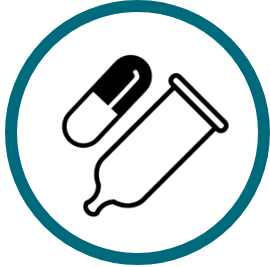 Reproductive Health
Reproductive Health
Adolescent First Birth
Sexually active adolescents use a modern contraceptive method to delay first birth until after age 18
Indicator: Percentage of sexually active unmarried women age 15-19 currently using any modern method of contraception
See Subnational & Trend data See Subnational & Trend dataBirth Spacing
After a live birth, women or their partners use a modern contraceptive method to avoid pregnancy for at least 24 months
Indicator: Percentage of currently married or in union women using family planning for spacing
See Subnational & Trend data See Subnational & Trend data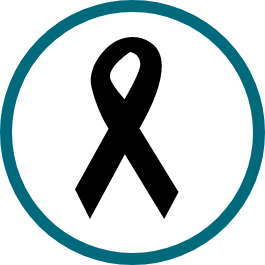 HIV
HIV
Condom Use
Women and men use a condom during high risk sex
Indicator: Percentage of women who say they used a condom the last time they had sex with a non-marital, non-cohabiting partner, of those who have had sex with such a partner in the last 12 months.
See Subnational & Trend data See Subnational & Trend dataIndicator: Percentage of men who say they used a condom the last time they had sex with a non-marital, non-cohabiting partner, of those who have had sex with such a partner in the last 12 months.
See Subnational & Trend data See Subnational & Trend dataMale Condom Use during Paid Sex
Men use a condom during paid sexual intercourse
Indicator: Percentage of men reporting condom use the last time they had paid sex, of those who report having had paid for sex in the 12 months preceding the survey.
See Subnational & Trend data See Subnational & Trend dataHIV Testing
Women and men test for HIV and obtain test results
Indicator: Percentage of women who have ever had an HIV test and received their results
See Subnational & Trend data See Subnational & Trend dataIndicator: Percentage of men who have ever had an HIV test and received their results
See Subnational & Trend data See Subnational & Trend data

 Country Data: HAITI
Country Data: HAITI School-Based Gender-Based Violence
School-Based Gender-Based Violence The Manoff Group was acquired by JSI in 2022.
The Manoff Group was acquired by JSI in 2022.